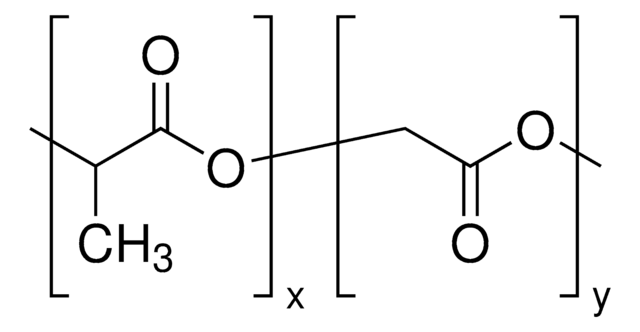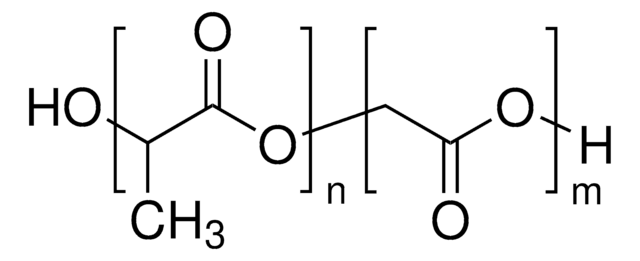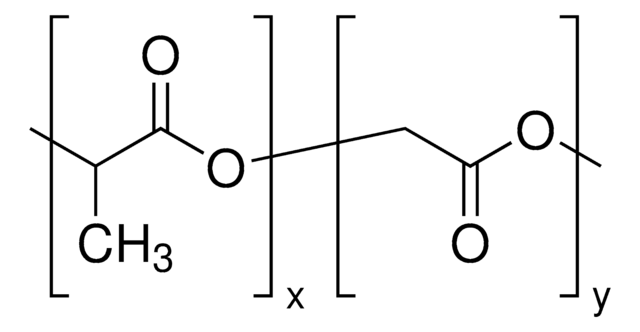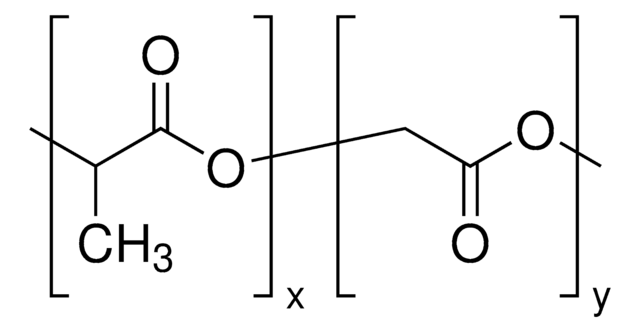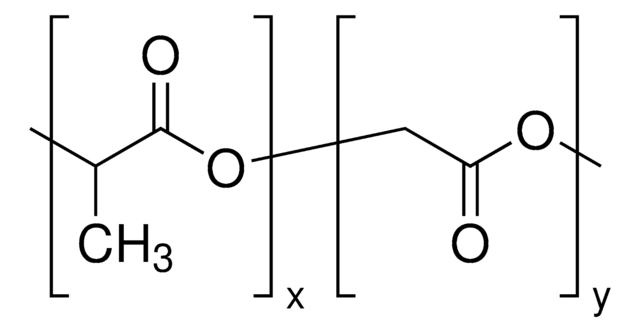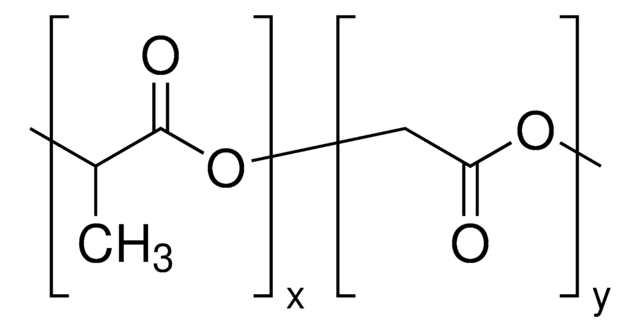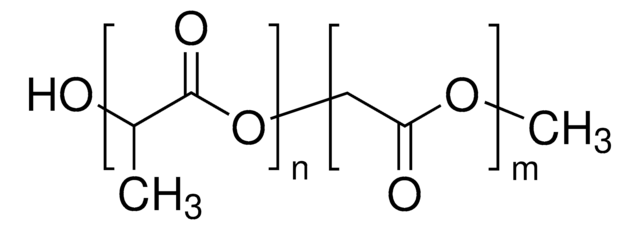Yes, the molecular weight unit of this product is in Da or daltons.
719900
Resomer® RG 504 H, Poly(D,L-lactide-co-glycolide)
acid terminated, lactide:glycolide 50:50, Mw 38,000-54,000
Sinônimo(s):
PLGA
About This Item
Produtos recomendados
Nível de qualidade
Formulário
amorphous
proporção de alimentação
lactide:glycolide 50:50
peso molecular
Mw 38,000-54,000
prazo de degradação
<3 months
viscosidade
0.45-0.60 dL/g, 0.1 % (w/v) in chloroform(25 °C, Ubbelohde) (size 0c glass capillary viscometer)
temperatura de transição
Tg 46-50 °C
temperatura de armazenamento
2-8°C
cadeia de caracteres SMILES
O2C(C(=O)OC(C2=O)C)C.O1CC(=O)OCC1=O
InChI
1S/C6H8O4.C4H4O4/c1-3-5(7)10-4(2)6(8)9-3;5-3-1-7-4(6)2-8-3/h3-4H,1-2H3;1-2H2
chave InChI
LCSKNASZPVZHEG-UHFFFAOYSA-N
Aplicação
It can be used to preparepolymer nanospheres for encapsulating CuO, to form stimuli-responsivemultifunctional nanocarriers.
Informações legais
produto relacionado
Código de classe de armazenamento
11 - Combustible Solids
Classe de risco de água (WGK)
WGK 3
Ponto de fulgor (°F)
Not applicable
Ponto de fulgor (°C)
Not applicable
Escolha uma das versões mais recentes:
Já possui este produto?
Encontre a documentação dos produtos que você adquiriu recentemente na biblioteca de documentos.
Os clientes também visualizaram
Artigos
Interest in utilizing biodegradable polymers for biomedical applications has grown since the 1960s.
Synthetic aliphatic polyesters dominate resorbable biomaterials in clinical use.
AliAliphatic polyesters, including polylactide and polyglycolide, are biodegradable polymers widely used in medical applications.
Immunosuppressive tumor-associated myeloid cells (TAMC) are responsible for glioblastoma (GBM) resistance to immunotherapies and existing standard of care treatments. This mini-review highlights recent progress in implementing nanotechnology in advancing TAMC-targeted therapies for GBM.
-
Is the unit of the PLGA molecular weight of Resomer® RG 504 H, Poly(D, L-lactide-co-glycolide) Da?
1 answer-
Helpful?
-
Active Filters
Nossa equipe de cientistas tem experiência em todas as áreas de pesquisa, incluindo Life Sciences, ciência de materiais, síntese química, cromatografia, química analítica e muitas outras.
Entre em contato com a assistência técnica


